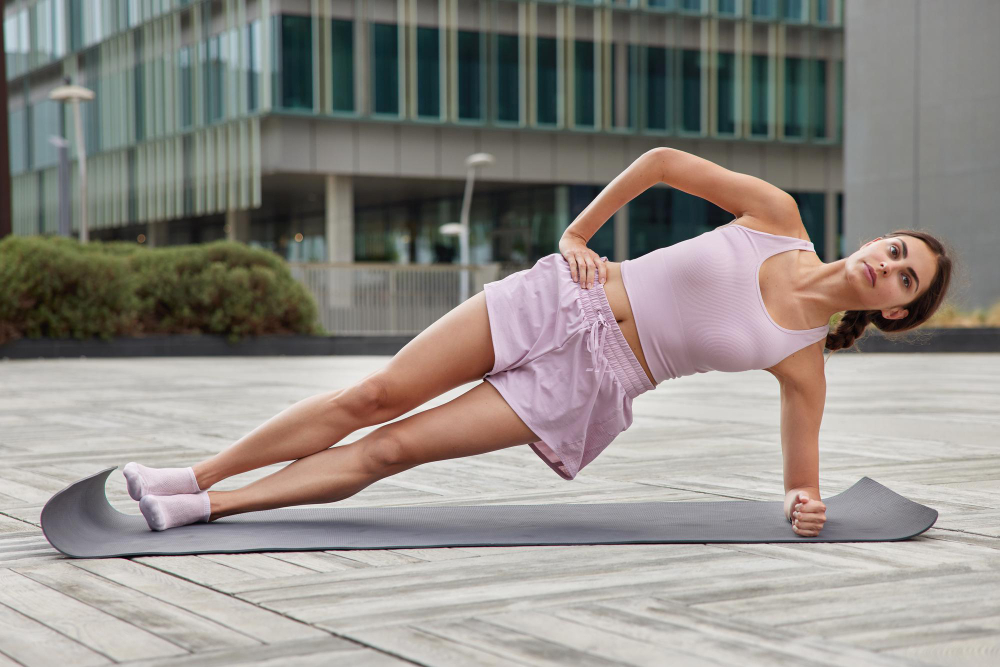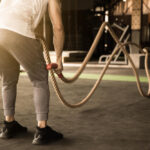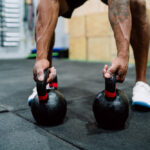Most core routines are all front-loaded… Crunches, planks, maybe some leg raises if you’re feeling fancy. But ask a top trainer what move they sneak into every smart core program, and you’ll hear the same thing: side plank leg lift. This move doesn’t just hit your abs. It goes deeper. It lights up your obliques, challenges your balance, tests your endurance, and calls out every weak spot from your shoulder to your glutes.
What Is a Side Plank Leg Lift?
Start with a side plank. Elbow under shoulder, body in a straight line, hips off the ground. Then lift your top leg. Sounds simple, right?
It’s not.
Holding the side plank already demands tension from your obliques, deep core, and glutes. But lifting that top leg throws everything off-balance. Suddenly, your abs have to stabilize from every angle. Your glute medius (the side of your butt) fires up. Your lower back has to hold steady. And your form? It better be dialed in.
This is a hybrid move: part isometric, part dynamic. And that’s exactly why it works.
Why Top Trainers Use It (And You Should Too)
Because it does what most ab moves don’t:
- It builds stability, not just strength.
- It forces control, not momentum.
- It exposes imbalances. Left side vs. right, core vs. glutes.
Most people train their abs like they’re separate from the rest of their body. They’re not. Your core’s job is to connect everything. The side plank leg lift trains your core in context, with your hips, shoulders, and spine all working together.
That’s why it’s a favorite among trainers who work with athletes, lifters, and anyone who needs real-world strength.
How to Do It Right
The side plank leg lift punishes sloppy form. Here’s how to do it right:
Step-by-Step:
- Set Up Your Side Plank: Elbow directly under your shoulder. Feet stacked or staggered. Hips off the ground. The body is in one straight line, and no sagging.
- Engage Everything: Brace your core like someone’s about to punch you. Squeeze your glutes. Don’t let your hips rotate forward or backward.
- Lift the Top Leg: Controlled, not high. Just enough to feel your glutes and outer thigh fire. Keep the leg straight. No flailing.
- Hold or Rep: You can hold the leg up for time or go for controlled lifts. Either works if you’re doing it right.
Watch Out For:
- Hips Dipping: Your obliques aren’t doing their job.
- Rotating Torso: You’re compensating with your back.
- Bent Top Knee: Check your glute engagement.
- Neck Strain: Keep your head in line with your spine.
Modifications:
- Too tough? Drop your bottom knee to the ground. The same rules apply.
- Still building strength? Skip the leg lift. Master the side plank first.
Want to try an intense core workout? Check out this HIIT core workout with dumbbells.
When to Use It in Your Routine
Trainers usually slot it early in the core session, right after warm-up, when your muscles are fresh and your focus is high. That’s when you can lock in your form and get the most out of it.
Progression Ideas:
- Add ankle weights or resistance bands.
- Try lifting and holding the top leg for 5 seconds per rep.
- Move from the elbow plank to full arm (hand) plank.
Final Thoughts
The side plank leg lift shows you where you’re strong, where you’re weak, and where you’re compensating. It forces your body to work as a unit, not just a collection of muscles doing their own thing. That’s why top trainers don’t skip it. And neither should you.





